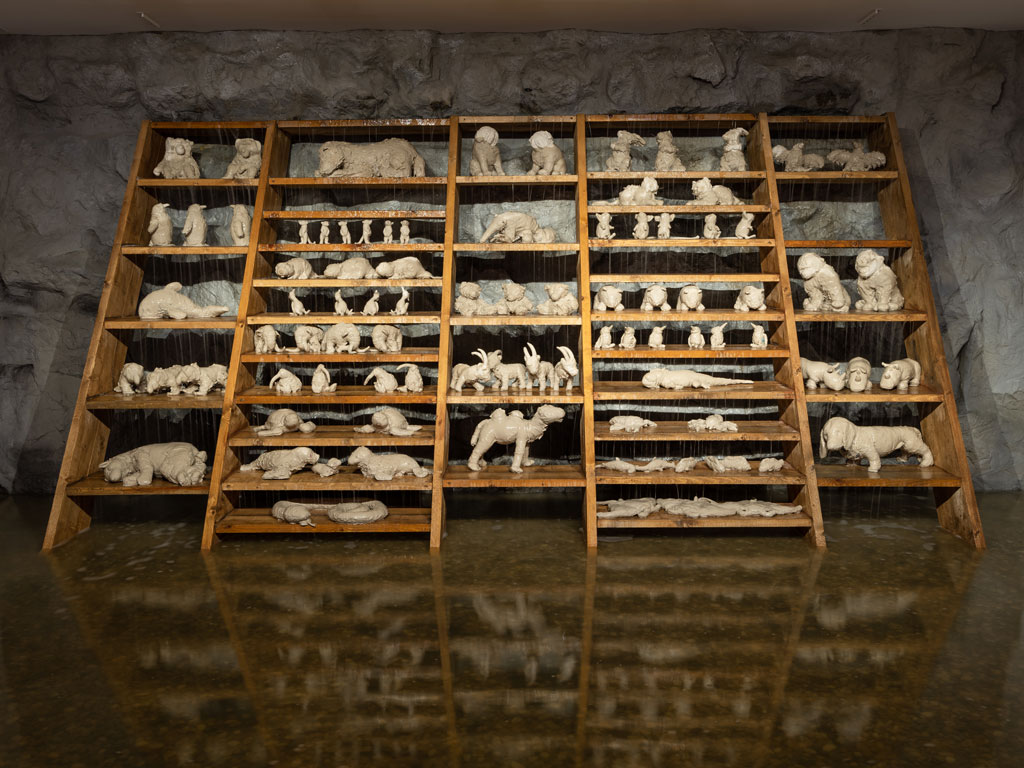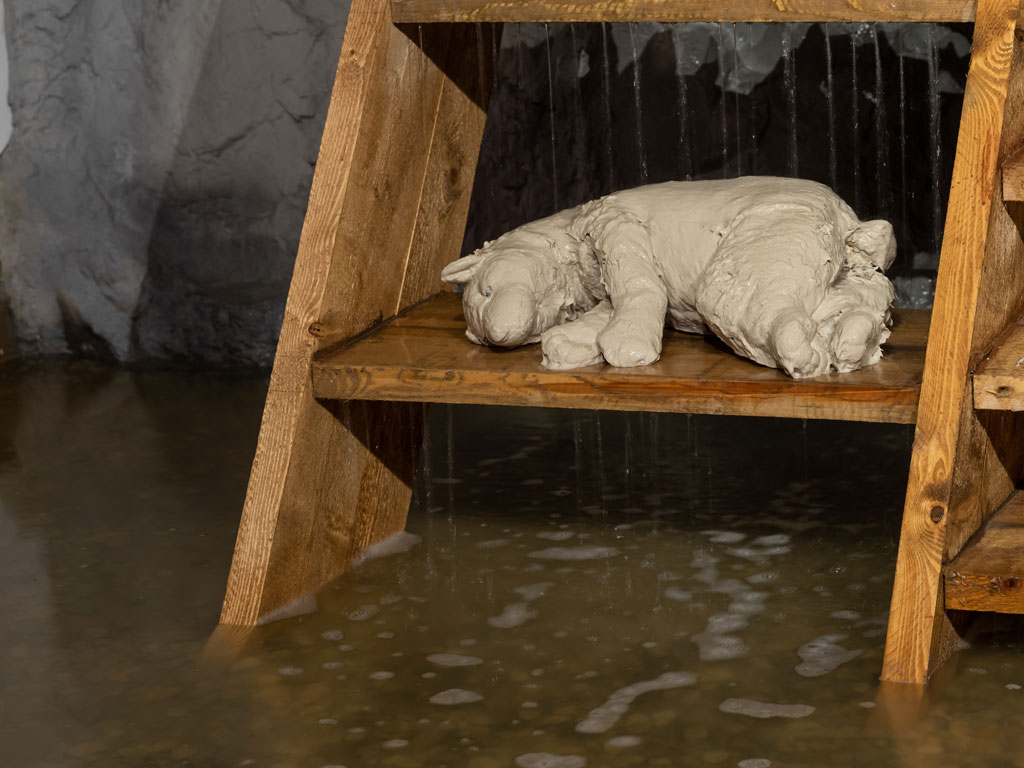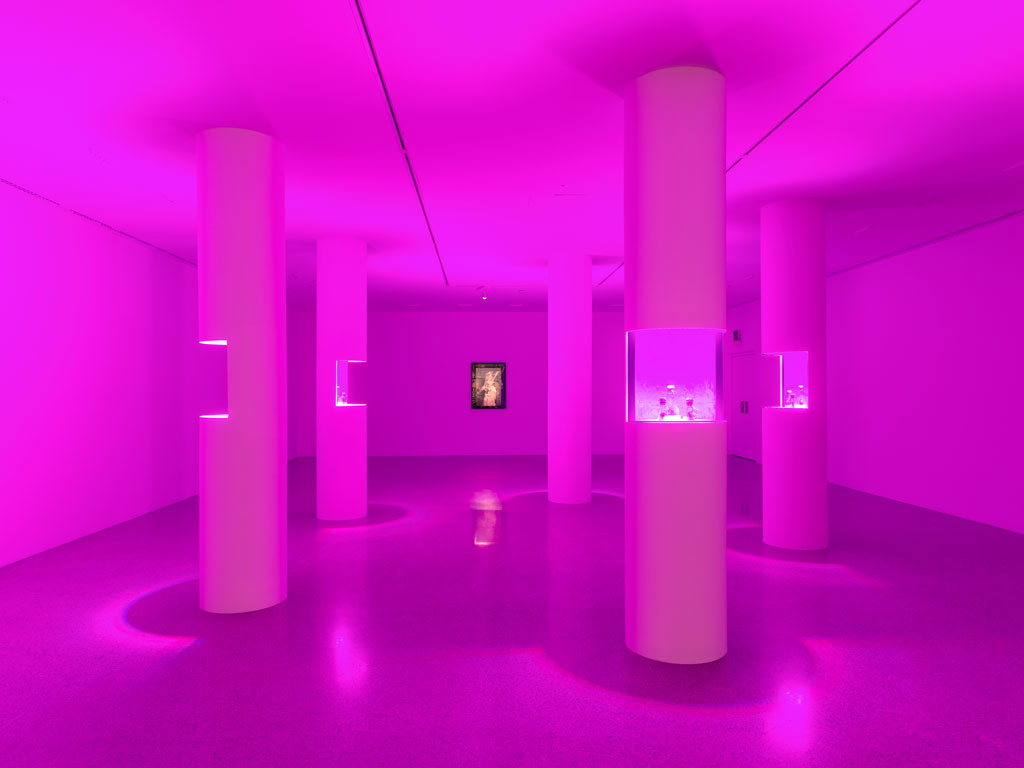ART-PRESENTATION: Christian Kosmas Mayer-Aeviternity
 Christian Kosmas Mayer is an artist whose exhibitions and projects engage questions of memory, preservation and rediscovery. He is concerned with testing the methods with which these issues can be tackled in an aesthetically surprising way: techniques of reversal, of compressing and stretching time, of looking at things from both ends at once.
Christian Kosmas Mayer is an artist whose exhibitions and projects engage questions of memory, preservation and rediscovery. He is concerned with testing the methods with which these issues can be tackled in an aesthetically surprising way: techniques of reversal, of compressing and stretching time, of looking at things from both ends at once.
By Dimitris Lempesis
Photo: mumok Archive
A starting point for Christian Kosmas Mayer’s solo exhibition “Aeviternity” is the architecture of the mumok building, which looks like a dark block of stone or a mine, a theme which recurs several times in the exhibition. This is evident, for example, in the true story of a young miner from Falun in Sweden, which Mayer refers to. The miner was buried alive in an accident in 1670, and his body was recovered years later in 1719, preserved in an almost perfect condition. Through all these years, vitriolic water had stopped the processes of decay, and once brought to the surface the corpse quickly became as hard as stone. An old woman near the end of her life recognized the petrified man as her long-lost fiancé. This story was particularly interesting for authors of the German Romantic movement, who made it one of the best-known tales of their own time, with texts by E.T.A. Hoffmann, Achim v. Arnim, Johann Peter Hebel, Hugo von Hofmannsthal, and others. In this exhibition, petrification is seen as a transformative process through which living materials can seem to overcome their own transience and oblivion, but paradoxically by paying with their own lives. Humankind has always been fascinated by this process, and thus attracted to petrifying springs. The natural phenomenon of petrification by water with high mineral content was used to petrify objects from everyday life over a period of months and years. The springs were originally seen as magical and bewitched places, associated with many different forms of superstition, and later they were amongst the first ever “global” tourist attractions in Victorian-age England. For his exhibition, Mayer installed an artificial petrifying spring inside mumok, which covers a number of objects with a layer of stone during the period of the exhibition. Whether the objects underneath this stone will then be forgotten or preserved for the future, when archeologists may rediscover them, is left as an open question. In 2012 Russian scientists found the seeds of a plant some forty meters under the ground in Siberia, which had been stored by an Arctic squirrel in its burrow and had thereafter survived in the permafrost. Working in the laboratory, the scientists managed to grow a plant from the placenta of one of these seeds. As the successors of this plant living in the Arctic region today have seen evolutionary change, this is a case of the revival of a piece of the Ice Age that must have been considered forever lost—as in the film Jurassic Park. Mayer has succeeded in integrating this plant into his exhibition as a living organism—the first time it has left the Moscow laboratory. Today, when the permafrost is slowly thawing due to climate change, this plant seems like a premonition of future reanimations, with completely unpredictable effects. Combining nature, culture, and science, this exhibition tells a complex story about the metamorphosis of objects over time and about the transience of our own concepts and perspectives of the world. The objects and images in this exhibition are witnesses to the passing of time in a frozen moment, in which the usually schematically distinct ideas of past, present, and future, and of life and death, become fluid. We are now testing out limits that we could once hardly imagine, and this is both a sign of progress, improvement, and self-assurance, and also has the potential of causing new fragmentation and insecurity.
Info: Curator: Rainer Fuchs, mumok – Museum moderner Kunst Stiftung Ludwig Wien, Museumsplatz 1, Vienna, Duration: 23/2-16/6/19, Days & Hours: Mon 14:00-19:00, Tue-Wed & Fri-Sun 10:00-19:00, Thu 10:00-21:00, www.mumok.at






